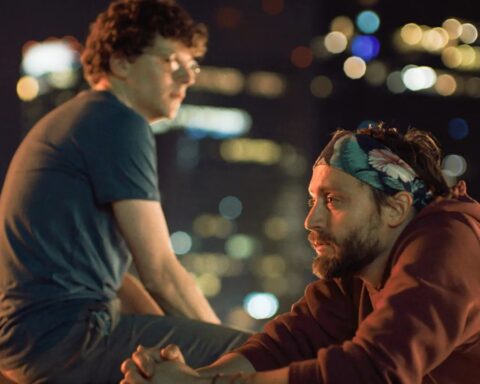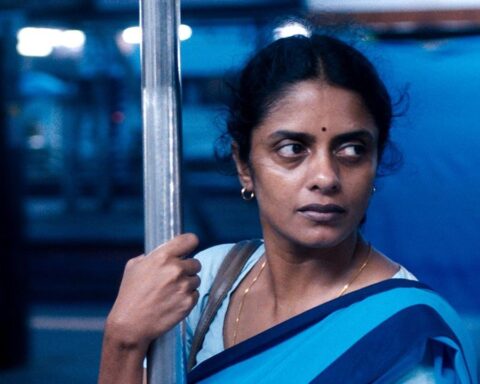P. Ramlee’s masterpiece turns 60 this year, and it is stunning just how relevant this movie remains in 2021.
Umapagan Ampikaipakan: It’s been decades since I’ve seen this movie in its entirety, and by God it still holds up. If you ever needed proof of P. Ramlee’s genius, then you need look no further than Ali Baba Bujang Lapok. It might just be my favorite of his films. It is absolutely joyous.
Bahir Yeusuff: “Hi reporter!”
My favourite is still Seniman Bujang Lapok but watching this again, at 37, with everything I’ve seen and heard, really shows me P. Ramlee’s absolute mastery of the form. There is so much here to unpack, from his writing, to his directing, to his use of language. He truly is up there with Chaplin and Keaton (Buster, not Michael).
Jual candu ada lesen, jual ganja ada lesen, tetapi jual belacan tak ada lesen. Saya smuggle dari Malaya.
UA: No one is spared from his biting wit. And yet, none of the jokes in the movie are at anyone’s expense. Just take Ibrahim Pendek’s Sarjan. There isn’t a single joke in the movie regarding his height. That would be too obvious. Too basic. And it’s symbolic of just how P. Ramlee crafts the humour in the movie.
Whether it features a Chinese cobbler or even an oddly out-of-place Japanese penyamun, every joke and one-liner always goes one step further than the joke that you’re expecting.
BY: For a movie that is still regarded as a comedy, P. Ramlee’s writing showcases more than just jokes. There are no real pratfalls or anything of the kind, there are no set-up/punchline jokes, just witty dialogue with a layer of social commentary that gives everything a little more oomph. I think Seniman Bujang Lapok is funnier, but this feels more mature. There is an unexpected depth.
Just take the Japanese penyamun. In a movie released in 1961, that seems like an odd choice seeing as how a big part of the audience at the time would have lived through the Japanese Occupation of Malaya. But by not making the Japanese guy the villain, or the butt of the jokes, P. Ramlee pushes past the stereotype, and the easy portrayal, and makes that random Japanese guy, dressed in Japanese military dress, a part of the gang of thieves. A part of HIS gang of thieves.
What’s more, instead of taking the titular role of Ali Baba, P. Ramlee, the writer and director of the film, is the villain (well, sort of villain). He plays the King of Thieves. I think that decision in making himself the bad guy and not the hero is astounding. (But also, if you watch the movie you’d see why he wouldn’t want to be Ali Baba.)
UA: Both of the examples you just cited display such a confidence in storytelling. To have a Japanese character played for laughs when the shadow of occupation still loomed large, and to only show up in your own movie 30 minutes into it, is a great example of always putting the story (and the comedy) first.

UA: For me, the thing that stands out most about Ali Baba Bujang Lapok, is the relevance of his observations. We were a nation that was barely four years old at the time of this movie’s release, we had barely coalesced as a society (God knows we’re still trying to figure that out), and P. Ramlee was unafraid to shine a spotlight on all of our communal idiosyncrasies and petty squabbles. He knew how to use this powerful platform to make a point. It was never preachy. But he still managed to speak truth to power with great effect.
Having Sarjan be shocked at the notion of the Chinese cobbler being a citizen of this land as long as he has (“Tauke tinggal di sini turun temurun ya?”). Having the ketua penyamun die with a grin on his face because he “died in the faith” (“Aku mati dalam iman”). You could lift those moments and place them in any modern movie and they would still remain true.
BY: Unfortunately not many contemporary Malaysian directors would know what to do with them. Or actors for that matter. The performances here are all great, Aziz Sattar and S. Shamsuddin as the two Babas (Ali and Kassim respectively) play the feuding brothers to a note. One is cursed with weak bones and unable to work, and the other (seemingly) more successful. Even in this, if you wanted to take it apart, has got commentary built in. Is the younger brother (Ali Baba) really cursed with weak bones, or just lazy? How did Kassim get rich? We never see him actually do any work, but we know he is in debt and is looking to leave town. Early in the movie we see Kassim Baba purchase a slave woman. (It was ancient Baghdad, it happens. Get off your high horse and read a history book.) He never really outbids the other buyer by much. Literally upping the other buyer’s bid by one Dirham – just enough to frustrate him and win the bid. Am I reading too much into that? Maybe. But with P. Ramlee’s writing I don’t think you can discount the character building.
I have to ask, there was a bit about how the new slave girl had bought belacan from the market, and Kassim’s wife remarks that it was particularly pungent smelling. Do you think there was anything there in the dialogue about how the belacan came from Penang? Was Penang as contentious as it is now amongst the Malays you think?
UA: I think that may be a line that rings far more metaphorical in 2021 than it did in 1961.

UA: It’s a little depressing that I can only think of a handful of Malaysian movies made in the last 20 years that have dared to venture into this sort of cutting cultural commentary. The most recent being Liew Seng Tat’s Lelaki Harapan Dunia.
BY: Oh that’s a good shout. I would also say Mamat Khalid’s Kala Malam Bulan Mengambang is probably the closest in terms of satirical commentary. But I think it’s safe to assume that both those movies were TERRIBLY received by Malays, and Malaysians in general. If ever there was an indication to how far we’ve fallen as a cinematic audience it would be those two movies.
I also think Jagat and One Two Jaga were movies with some heavy messages, but they may be a little more on the nose than your average P. Ramlee movie.
UA: Ali Baba Bujang Lapok is as mainstream and mass as it gets. Meanwhile, Lelaki Harapan Dunia, and Jagat, and One Two Jaga, while indie darlings, would have only been seen by a tiny group of cinephiles and enthusiasts.
Which says a lot about how the so-called studio film has evolved over time. A movie for the masses has come to mean something very different these days. They don’t really stand for much. They should be as inoffensive as possible. (And I’m not saying this is unique to us. God knows Hollywood often works under that principle of “conservatives buy movie tickets too.”)
Meanwhile, here was P. Ramlee making a movie for the Shaw Brothers, in which he is supposedly criticising their unions with his reference to “Persatuan Penyamun.” That’s ballsy.
BY: And being kicked out for not having paid their dues. Read into that what you will but there are still a lot of issues with the Malaysian filmmaking fraternity when it comes to unions.

I think the bigger shame here is that P. Ramlee movies are not as widely seen anymore. There aren’t special P. Ramlee screenings of his older movies. Even though we watched this on our Astro Go accounts, we didn’t really know they were all there until very recently. Aside from the “don’t forget our heroes” sentiment, they are also very very good movies. His writing is exemplary, his social commentary is biting, but his humor and wit is of a different class. You’d be forgiven to think that a lot of these jokes are similar to what you’ve seen in a Monty Python or National Lampoon’s skit. But done many years prior, and in Malay. P. Ramlee’s ability to stitch together emotions and storytelling, when approached with a critical eye, truly reminds you what a genius the man was.
UA: Back in the late nineties, when I lived in Sydney, there used to be a local cinema that would screen A Clockwork Orange, every night, at 11PM. I don’t quite know why. It might have been the owner’s favourite movie. Or just something they felt people needed to see. I always hoped that one of our local cinema chains would do something like that. Keep P. Ramlee movies on rotation so everyone has a chance to watch them on the big screen. Heck, if FINAS wanted to do something useful with all the money they usually just fritter away, then sponsoring those screenings would be the way forward.
BY: In their defence, I think they did try that once. It was at the old Coliseum Theatre in town. But people never really responded. As a society, we feel like we’ve moved on from that old timey stuff. As if we’re better now, watching (and making) better feature films. But we’re not.

BY: Sitting down for two hours to watch P. Ramlee and friends do a reimagining of the Ali Baba and the Forty Thieves story is a great way to spend a Sunday afternoon. If you pay attention you’ll realize that this was what Malaysian cinema used to be. Before Indonesian, and Korean, and Thai cinematic movements were a thing, P. Ramlee was the guy to beat. And in all honesty, for Malaysian filmmakers, it’s still the bar that we have come nowhere close to reaching. Let alone clearing.
UA: There’s a story that Amir Muhammad once told me. It was the early 1970s I think and P. Ramlee was at an event at University Malaya. By this point, he had suffered many personal and creative setbacks, and wasn’t held in quite the same regard as he is today. He was uncool. And the youth at the time made it abundantly clear when they booed and heckled him. It was awful.
You’re right when you say we’ve moved on. We did so even then. We’ve never quite recognised our heroes when they were alive. We’ve never acknowledged their genius when we should have. Or learned from it. There’s a lot to take away from the works of P. Ramlee. His movies hold the key to make us better filmmakers, and artists, and writers. Pay close attention, and they might even make us better people.









Follow Us